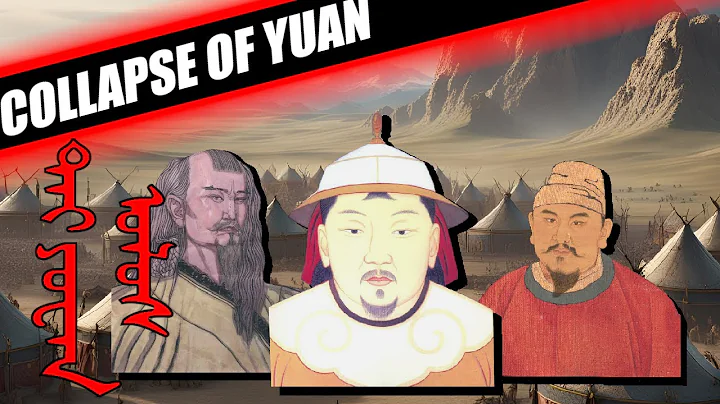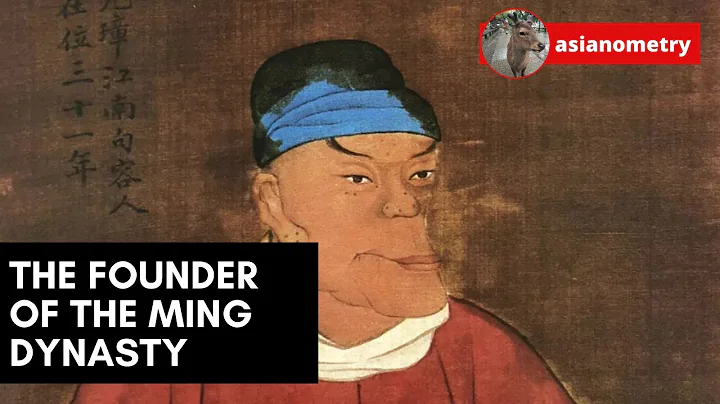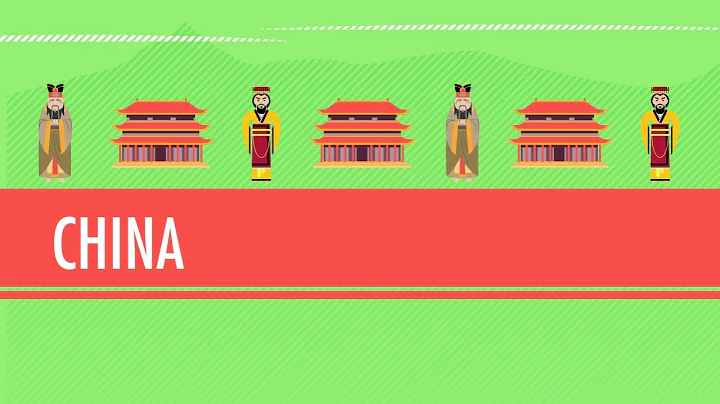Ming Taizu Zhu Yuanzhang is one of the most topical emperors in Chinese history. He was originally a beggar with nothing. He participated in the peasant uprising in the social background of the end of the Yuan Dynasty when everything was full of smoke and the people were in dire straits, and finally struggled to the top of the temple. Such a rise experience Very legendary.
Zhu Yuanzhang's sinister and cruel behavior made the world's hair stand on end. He used high-pressure policies to impose totalitarian rule on the people, massacred heroes, frequently implicated nine ethnic groups in criminals, and used torture to punish corrupt officials.

Zhu Yuanzhang's mausoleum, like himself, is hidden under the curtain of terror and mystery. In the more than 600 years since the death of the tomb owner, no tomb robbers have ever dared to visit this place.
What is even more interesting is that decades after the fall of the Ming Dynasty, Emperors Kangxi and Qianlong of the Qing Dynasty went to visit the tomb one after another.
So, what is so mysterious about this tomb? Could it be that the cruel emperor’s lingering power deterred the tomb robbers? Or was it the treasures contained in the relics of the previous dynasties that attracted the rulers of the Qing Dynasty? What is the truth? Let us follow the author to find out.

Unique geographical advantage
Zhu Yuanzhang's mausoleum is called "Xiaoling" and is located at the southern foot of Zijin Mountain in Nanjing. It is the joint burial mausoleum of him and Queen Ma .
The superior geographical location is an important factor in Xiaoling's survival from tomb robbers. Generally, the construction of imperial tombs involves digging pits from the surface from top to bottom. After the underground palace is built, it is sealed and protected. This design makes it easy for tomb robbers to enter the tomb by digging holes.
Northern Qi The tomb of Emperor Wenxuan of the Northern Qi Dynasty was built under the village according to this excavation method. During the excavation, the emperor's tomb was severely damaged. Several robber holes led directly to the tomb passage and tomb chamber. There was serious water accumulation in the tomb, and the exquisite murals were damaged. Countless rare paintings were damaged. Cultural relics were also looted.

However, the main body of Xiaoling Tomb was built next to the mountain, and the underground palace was built in Dulongfu, a hollowed-out stone mountain. The hard mountain of Dulongfu makes it difficult for tomb robbers to enter the underground palace through holes.
If the robbery hole cannot be opened, the tomb robbers will naturally have other ways to enter the tomb. Sun Dianying When they robbed the Eastern Tombs of the Qing Dynasty and the Tomb of Cixi, they used explosives to violently destroy the ancient tombs and forcibly entered them.
But Xiaoling Mausoleum is located in the center of Nanjing, a densely populated area. If the tomb robbers use explosives rashly, the huge noise they make will make it difficult for others to detect their actions.

Unique structural design
Xiaoling’s unique structural design also makes it difficult for tomb robbers to attack, which is also a major reason to protect the tomb from being robbed.
Generally, the sealing of imperial mausoleums will form eye-catching mounds on the ground; the tomb passage connecting the main chamber is perpendicular to the ground or inclined at a certain angle; at the same time, the entrance to the tomb passage may also have stone statues, floating bricks, inscriptions, coupon doors, etc. Eye-catching signs make it easy for tomb robbers to find the entrance to the tomb.
However, Xiaoling Mausoleum is hidden in the mountains, and the craftsmen also put great effort into the design of the tomb passage. The tomb passage does not pass through the central axis of the tomb chamber, but is thoughtfully built on the side of the tomb chamber.

In addition, the craftsmen also sealed the entrance of the tomb passage tightly with earth and rocks, and the surrounding tomb passage was also wrapped in layers of hard rocks from the mountain.
This airtight concealment method makes it difficult for tomb robbers to find the entrance to Xiaoling Tomb. If tomb robbers try to bypass the tomb passage and enter the tomb from other parts of the mountain, they will incur greater costs and face a higher risk of failure.
Another amazing design of Xiaoling Tomb is the thick cobblestones laid on the top of the underground palace. This layer of cobblestones can not only speed up the penetration of rainwater, but also allow rainwater to quickly flow into the drainage facilities in baoding , also plays an important anti-theft role.

When a tomb robber destroys the structure of the treasure roof and opens the cave, the weight of the pebbles will cause them to pour down from all directions like quicksand, completely blocking the tomb robber's escape route.
These exquisite designs have effectively prevented tomb robbers from coveting it, so we can still see the well-preserved Xiaoling Tomb with no traces of being stolen.
Well-arranged manpower protection
Xiaoling Mausoleum is the resting place of the founding emperor of the Ming Dynasty. It contains rich political significance and cultural value. Therefore, in the hundreds of years after its completion, protection measures for the mausoleum have never been absent. This makes the tomb safe from tomb robbers.

In the Ming Dynasty, Xiaoling Mausoleum, as the fundamental place of ancestors, was highly valued by the supreme ruler. In order to ensure that Taizu's soul could rest in peace and not be disturbed, the rulers designated the area around Xiaoling Mausoleum as a forbidden area and set up special garrison troops to station here to guard the mausoleum.
This garrison was therefore named "Xiaoling Guard". The soldiers of Xiaoling Guard were screened at all levels and had outstanding military qualities.
These soldiers also have a high sense of responsibility and mission, and they are never tired of drilling and patrolling. They would also accept assessments from the imperial court at regular intervals. When they were too old and weak to handle the task of guarding the tomb, they would retire and return home to let their sons take over.

After the demise of the Ming Dynasty, Xiaoling Guard also disappeared, but Xiaoling did not lose its protective power.
In order to commemorate their motherland, the survivors of the late Ming Dynasty often took on the task of guarding the tomb. The famous Confucian scholar Gu Yanwu once lived under Zhongshan and became the guardian of the Xiaoling Mausoleum.
Xiaoling Mausoleum is the spiritual home of the survivors of the late Ming Dynasty and a political propaganda tool for the rulers of the Qing Dynasty. Its political role has led the rulers of the Qing Dynasty since Kangxi to take a series of actions to support the work of protecting the mausoleum.
During the Tongzhi period, Zeng Guofan was ordered to repair the Xiaoling Mausoleum, and the broken stone tablets in the Xiaoling Mausoleum were glued and repaired.

During the Xuantong period, as the number of tourists around the Xiaoling Mausoleum gradually increased, the prefect of Jiangning also arranged for someone to erect a notice monument in the cemetery to warn tourists not to damage the tomb.
Even after the end of the Qing Dynasty, the government of the Republic of China attached great importance to the protection of the mausoleum and allocated special funds for its protection. Sun Yat-sen and officials once visited the Xiaoling Mausoleum and gave instructions on the protection work.
Reasons for Kang and Qian's visit
Xiaoling Mausoleum during the Ming and Qing Dynasties was still valued by the new dynasty . Kangxi and Qianlong visited the Xiaoling Mausoleum in person during their southern tours and performed the "three kneels and nine kowtows" ceremony, which was surprising.

However, the two men's devout visit was obviously not simply to pay respect to the former emperor, but to imply a deeper political appeal.
Kang Qian paid homage to Xiaoling in order to alleviate ethnic conflicts. As we all know, during the Qing Dynasty's march into the Central Plains, the crimes it committed in the Jiangnan region, including Nanjing, were heinous and too numerous to describe.
The Qing army not only issued a "hair-shaving order" and forced the people in Jiangnan to "keep their hair but not their heads, and their heads but not their hair", they also carried out inhumane massacres when attacking Jiading and Yangzhou. People all responded to the brutal Qing Dynasty. Ting was full of hatred.

So after the war ended and the political situation stabilized, the rulers of the Qing Dynasty quickly took remedial measures. In order to show goodwill to the people of Jiangnan, Kangxi and Qianlong personally came to their spiritual holy land to make a respectful and humble gesture. They covered up their past crimes and The real purpose of alleviating the conflict between Manchu and Han is obvious.
Kang Qian paid homage to Xiaoling II in order to eliminate cultural barriers. As an ethnic minority from the white mountains and black waters, as a foreign invader from the Central Plains, in order to stabilize their basic base, the Qing regime needed to constantly accept the Central Plains Confucian culture to eliminate the Han people's inherent concept of "brutal barbarians" , winning the world's recognition of his rule.

Taizu of the Ming Dynasty founded the Han nationality and pursued Confucian culture. Driven by the desire to eliminate cultural barriers, the two emperors of Kangxi and Qianlong paid homage to the Xiaoling Mausoleum of the Ming Dynasty. The purpose was to declare to the world their identification with Confucian culture and promote the cultural integration of the Manchu and Han ethnic groups.
However, whether it is to alleviate ethnic conflicts or eliminate cultural barriers, the ultimate purpose of the Qing rulers' visit to the Xiaoling Mausoleum was to maintain the stability of their rule.
Conclusion
Ming Taizu, Kangxi and Qianlong have passed away, but Xiaoling is still hidden silently in Purple Mountain . What is different from the past is that it has unveiled its mysterious veil.

Today, Xiaoling Mausoleum displays the industrious wisdom of the ancient working people with exquisite cultural relics, and tells the past events of the Ming and Qing Dynasties with its vicissitudes of relics.
This is the most beautiful destination of this imperial mausoleum - not as a political tool of the feudal king, but as a great heritage of the Chinese nation.





















